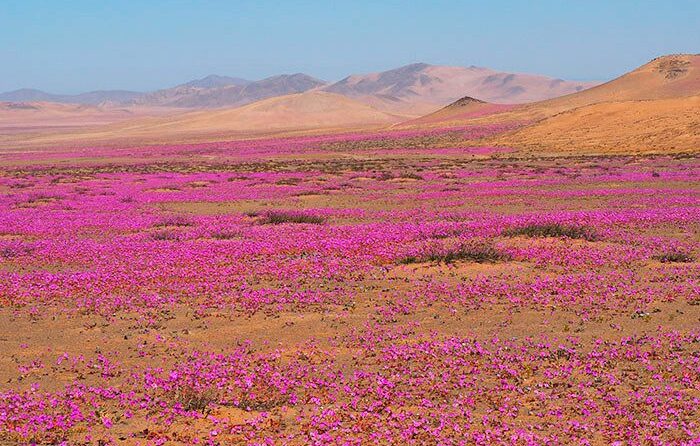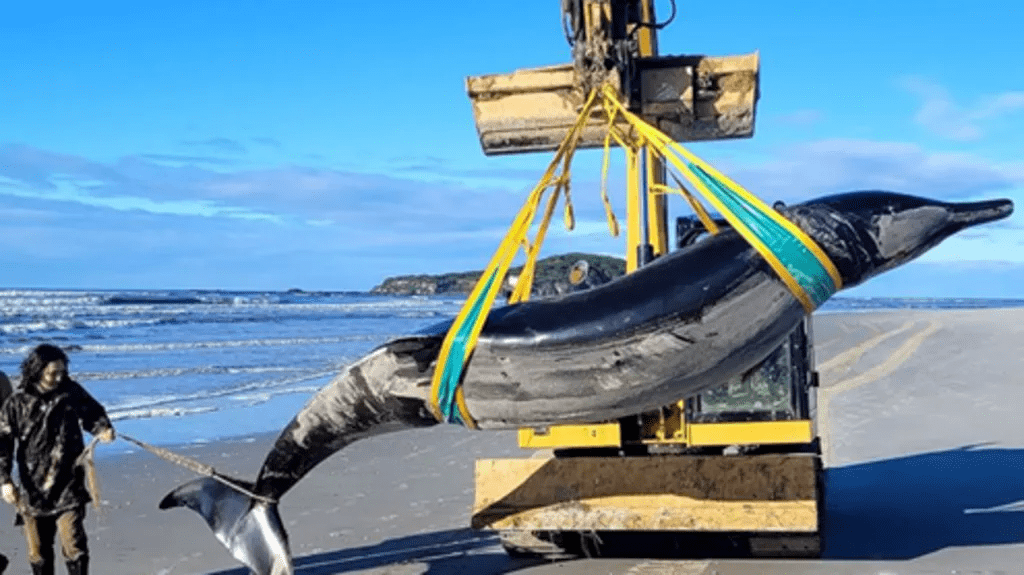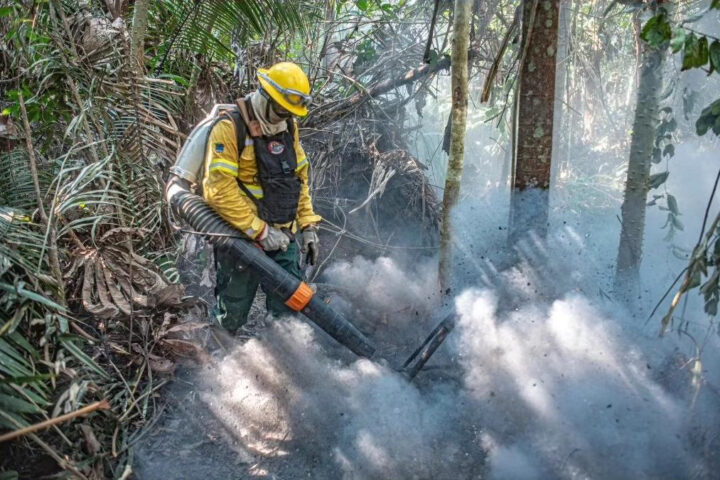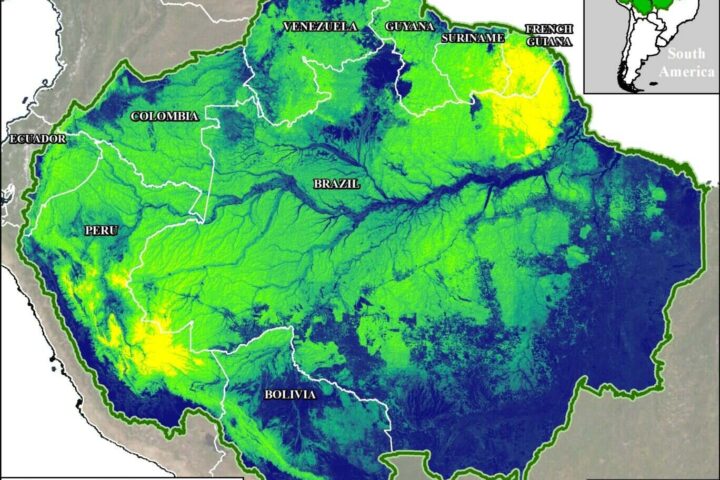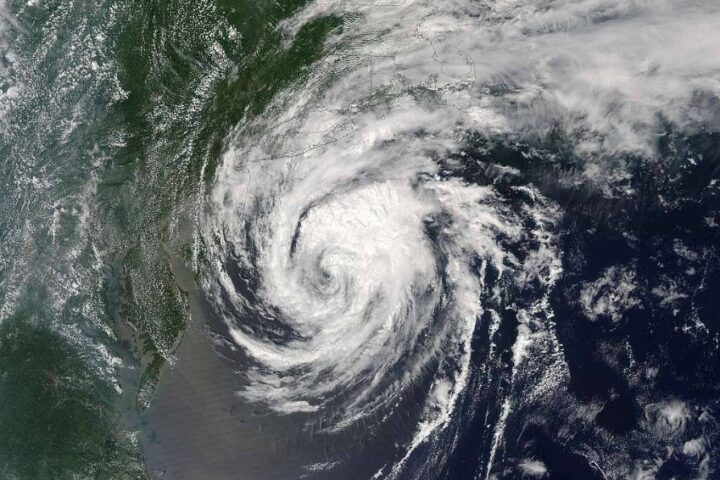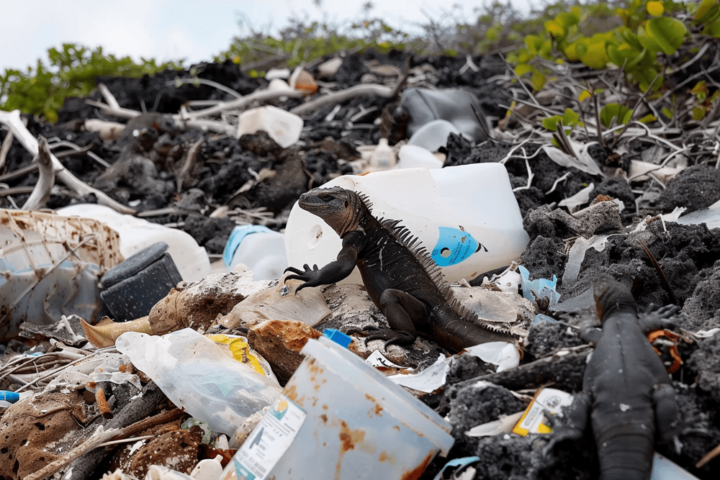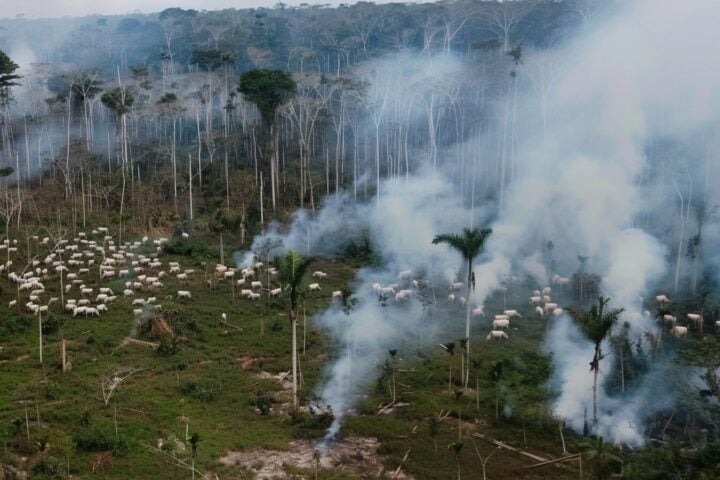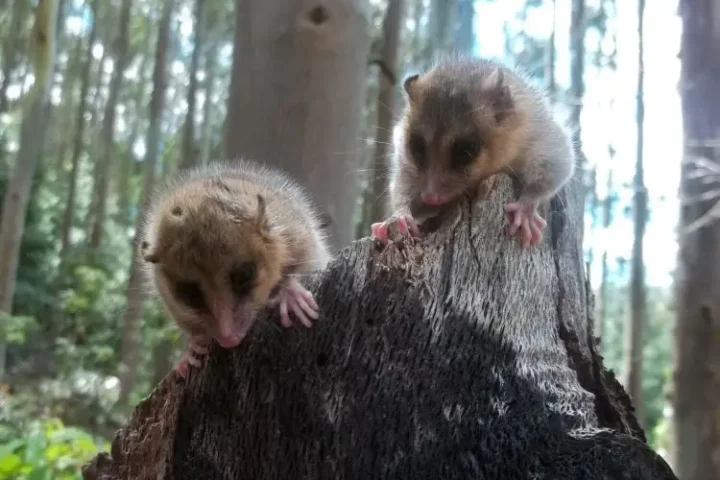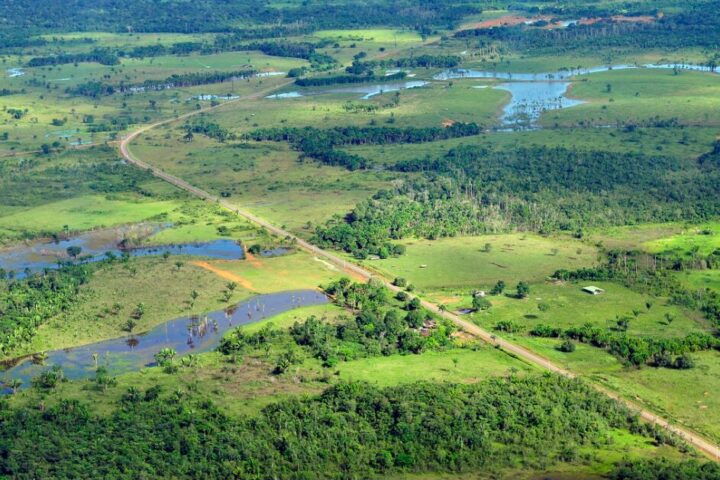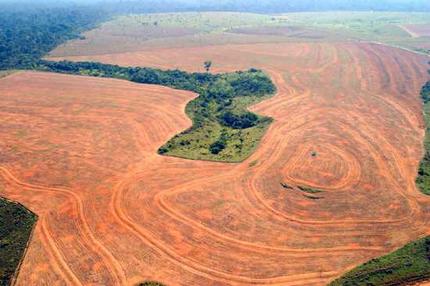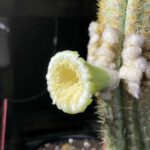For the first time in a decade, plants in the Atacama Desert have started flowering in the middle of winter, covering a portion of the driest desert on the planet in white and violet hues. Researchers reveal that one of the reasons behind these inadvertent events is perhaps climate change.
Plants in the Atacama Desert blooming is a novelty, and that too in the middle of the winter season. The rare bloom is the result of rain in northern Chile during the Southern Hemisphere’s fall. About 0.4 inches (11 millimeters) fell in mid-April, which combined with the morning fog known locally as “Camanchaca” to activate vegetation that can remain dormant for up to 15 years.
Two of the first species to color the landscape this year were the “pata de guanaco” (Cistanthe grandiflora) with its bright fuchsia-colored flowers, and the white “sighs of field” (Nolana baccata). Usually, a full flowering desert due to rains in the winter can stretch up to 5,800 square miles, where around 200 species of flowers bloom.
Similar Posts
Most of the time, flowers bloom during the springtime and within the months of June, July, and August. This mainly happens due to the El Niño effect. La Niña may hinder Atacama’s rare winter bloom, impacting pollination. In any case, if La Niña happens again, these flower patches will perhaps be the last ones to be seen in this decade.
The main problem is that pollinators do not arrive as quickly as the plants react to rain, according to Maria Fernandez Perez, associate professor of ecology at the Pontifical Catholic University of Chile. She says, “If the seeds germinate and flower but the pollinators do not arrive, the seeds run out.”
Typically, the desert flowers bloom in spring after at least 0.6 inches (15 mm) of rain falls between June, July, and August. In short, the driest place on Earth sees flowers blooming for the first time in a decade. The driest place on Earth, the Atacama Desert, has started blooming in the middle of winter.
